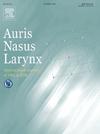处理术后颈部出血的在线视频培训
IF 1.5
4区 医学
Q2 OTORHINOLARYNGOLOGY
引用次数: 0
摘要
目的:术后颈部出血(PNH)和随后的血肿形成是有充分证据的头颈部手术并发症,可导致严重的气道狭窄。在危及生命的情况下,从联合医务人员到外科医生的快速反应至关重要。为此,我们制作了一个在线培训视频,帮助护士轻松掌握日本医疗安全与援助中心发布的PNH管理共识声明中的要点。方法:本前瞻性研究于2023年1 - 3月在7家医院(2家大学医院和5家综合医院)的耳鼻喉科进行远程研究。收集了几个数据点,并对护士观看视频前后进行了比较。结果:共有101名护士参与。在观看视频之前,有和没有PNH经历的人在感知窒息风险和对其原因的了解方面存在显著差异(p = 0.01和p <;分别为0.01)。护士在看完视频后认识到血氧饱和度对PNH的早期发现作用有限。他们也明白血肿清除,而不是吸入气道,是治疗PNH的关键(p <;0.01)。无论先前的经验如何,他们对PNH管理的信心显著增加(p <;0.01)。结论:该培训视频有效强化了共识声明中概述的PNH管理的关键方面,提高了护士应对PNH的信心。本文章由计算机程序翻译,如有差异,请以英文原文为准。
Online video training for managing postoperative neck hemorrhage
Objective: Postoperative neck hemorrhage (PNH) and subsequent hematoma formation are well-documented complications of head and neck surgery that can result in severe airway narrowing. A rapid response from co-medical staff to surgeons is critical in life-threatening situations. For this purpose, we created an online training video to help nurses easily grasp key points from the consensus statement on PNH management issued by the Japanese Center for Medical Safety and Assistance.
Methods: This prospective study was conducted remotely at the otorhinolaryngology departments of seven hospitals (two university hospitals and five general hospitals) between January and March 2023. Several data points were collected and compared before and after nurses watched the video.
Results: A total of 101 nurses participated. Before watching the video, significant differences were observed in the perceived risk of asphyxia and knowledge of its causes between those with and without prior PNH experience (p = 0.01 and p < 0.01, respectively). After watching the video, nurses recognized that oxygen saturation plays only a limited role in the early detection of PNH. They also understood that hematoma removal, but not suction of the airway, is crucial in the management of PNH (p < 0.01). Their confidence in PNH management significantly increased, regardless of prior experience (p < 0.01).
Conclusion: This training video effectively reinforced key aspects of PNH management outlined in the consensus statement and improved nurses’ confidence in responding to PNH.
求助全文
通过发布文献求助,成功后即可免费获取论文全文。
去求助
来源期刊

Auris Nasus Larynx
医学-耳鼻喉科学
CiteScore
3.40
自引率
5.90%
发文量
169
审稿时长
30 days
期刊介绍:
The international journal Auris Nasus Larynx provides the opportunity for rapid, carefully reviewed publications concerning the fundamental and clinical aspects of otorhinolaryngology and related fields. This includes otology, neurotology, bronchoesophagology, laryngology, rhinology, allergology, head and neck medicine and oncologic surgery, maxillofacial and plastic surgery, audiology, speech science.
Original papers, short communications and original case reports can be submitted. Reviews on recent developments are invited regularly and Letters to the Editor commenting on papers or any aspect of Auris Nasus Larynx are welcomed.
Founded in 1973 and previously published by the Society for Promotion of International Otorhinolaryngology, the journal is now the official English-language journal of the Oto-Rhino-Laryngological Society of Japan, Inc. The aim of its new international Editorial Board is to make Auris Nasus Larynx an international forum for high quality research and clinical sciences.
 求助内容:
求助内容: 应助结果提醒方式:
应助结果提醒方式:


